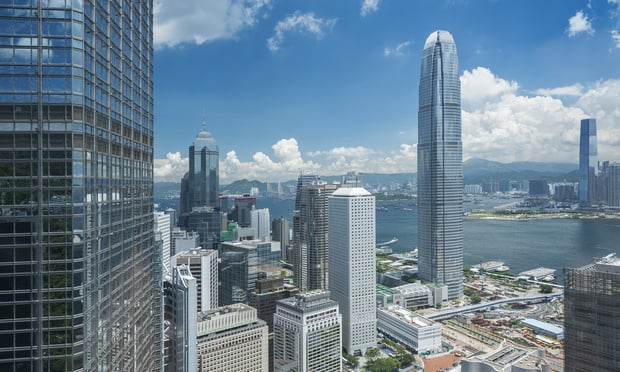Privately owned public open spaces are publicly accessible areas provided and maintained by private developers and owners. In the exclusive commentary below, Manatt, Phelps & Phillips LLP's Tara Shabahang and Tom Muller talk more about these areas, common in downtown commercial areas, financial districts, and other high-density urban environments in the form of plazas, terraces, atriums, urban gardens, and small, sunny sitting spaces known as snippets. They say that there is tension between the open nature of these spaces and the obligations and liabilities that owners assume by providing them.
The views expressed below are Shabahang's and Muller's own.
Developers typically provide POPOS because cities require them or in exchange for density bonuses or relaxation of municipal height and setback restrictions. Although the square footage of an individual POPOS may be small, their aggregate footprint can be quite large – at least 530 of these spaces exist in Manhattan alone, encompassing over 80 acres.
With owners retaining ownership and the public gaining use of the space, POPOS seem like a win-win. What remains unclear, though, is how “private” is this private property?
City zoning provisions governing POPOS often provide detailed requirements for design, signage, hours of availability and amenities, but the operation and management of these spaces is left largely to the owners.
In an acknowledgement that commercial activity in a public space can benefit both public and private commercial interests, for instance, the New York City Zoning Resolution now requires retail frontage along urban plazas and allows open-air cafes. When the cafes strategically arrange planters around movable tables and chairs to create a perimeter that creates the appearance that buying food or drink is the price of admission, the public benefit gets to some degree lost.
Like most such codes, the San Francisco planning code delegates “[a]ll costs of the open space, including . . . those associated with design, development, liability insurance, regular maintenance, and safe operation” of POPOS to the property owner, putting the property owner in the business of running what is in effect a small public park.
Should the public's right to use such spaces be the same as for publicly owned land? In 2011, Occupy Wall Street decided to pitch tents in New York's Zuccotti Park, a privately owned public space. This soon raised the question whether in light of the public nature of the space First Amendment freedom of speech protections apply in these spaces, in the same way as they have been held to apply in shopping centers.
Ultimately, in the case of Zuccotti Park the court found that the owner's prohibitions against sleeping or lying down in the park after the arrival of the protestors were reasonable, irrespective of First Amendment limitations, but it is by no means clear that this is the last word on the subject.
Can property management prevent members of the public from engaging in religious chanting in a building atrium? Are owners expected to bear the risk of liability for injury when individuals engage in acrobatics on a rooftop park or skateboard on architectural features? While these activities arguably fall outside reasonable expectations for behavior in an office building plaza or deck, they seem to fall safely within the confines of appropriate use of a truly public space.
While POPOS create much-needed publicly accessible space in urban centers, and private owners are tasked with the management and maintenance of public spaces, there is a real tension—largely unresolved under current law—between the open nature of these spaces and the obligations and liabilities that owners assume by providing them.
Privately owned public open spaces are publicly accessible areas provided and maintained by private developers and owners. In the exclusive commentary below,
The views expressed below are Shabahang's and Muller's own.
Developers typically provide POPOS because cities require them or in exchange for density bonuses or relaxation of municipal height and setback restrictions. Although the square footage of an individual POPOS may be small, their aggregate footprint can be quite large – at least 530 of these spaces exist in Manhattan alone, encompassing over 80 acres.
With owners retaining ownership and the public gaining use of the space, POPOS seem like a win-win. What remains unclear, though, is how “private” is this private property?
City zoning provisions governing POPOS often provide detailed requirements for design, signage, hours of availability and amenities, but the operation and management of these spaces is left largely to the owners.
In an acknowledgement that commercial activity in a public space can benefit both public and private commercial interests, for instance, the
Like most such codes, the San Francisco planning code delegates “[a]ll costs of the open space, including . . . those associated with design, development, liability insurance, regular maintenance, and safe operation” of POPOS to the property owner, putting the property owner in the business of running what is in effect a small public park.
Should the public's right to use such spaces be the same as for publicly owned land? In 2011, Occupy Wall Street decided to pitch tents in
Ultimately, in the case of Zuccotti Park the court found that the owner's prohibitions against sleeping or lying down in the park after the arrival of the protestors were reasonable, irrespective of First Amendment limitations, but it is by no means clear that this is the last word on the subject.
Can property management prevent members of the public from engaging in religious chanting in a building atrium? Are owners expected to bear the risk of liability for injury when individuals engage in acrobatics on a rooftop park or skateboard on architectural features? While these activities arguably fall outside reasonable expectations for behavior in an office building plaza or deck, they seem to fall safely within the confines of appropriate use of a truly public space.
While POPOS create much-needed publicly accessible space in urban centers, and private owners are tasked with the management and maintenance of public spaces, there is a real tension—largely unresolved under current law—between the open nature of these spaces and the obligations and liabilities that owners assume by providing them.
Want to continue reading?
Become a Free ALM Digital Reader.
Once you are an ALM Digital Member, you’ll receive:
- Breaking commercial real estate news and analysis, on-site and via our newsletters and custom alerts
- Educational webcasts, white papers, and ebooks from industry thought leaders
- Critical coverage of the property casualty insurance and financial advisory markets on our other ALM sites, PropertyCasualty360 and ThinkAdvisor
Already have an account? Sign In Now
*May exclude premium content© 2025 ALM Global, LLC, All Rights Reserved. Request academic re-use from www.copyright.com. All other uses, submit a request to [email protected]. For more information visit Asset & Logo Licensing.








